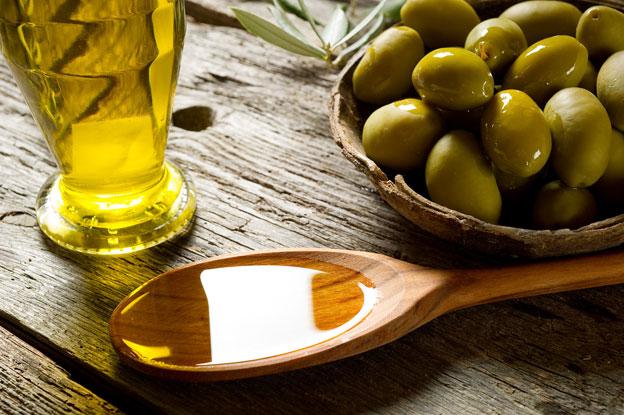This week, the New York Times presented a slideshow titled, “Extra Virgin Suicide: The Adulteration of Italian Olive Oil”, about olive oil fraud.
One of the slides states: “Much of the oil sold as Italian olive oil does not come from Italy but from countries like Spain, Morocco and Tunisia”. We wonder, however, what does "much" mean in this case and worry that this claim might lead consumers to think that Italian Olive Oil is not to be trusted in general, damaging the many honest producers who actually make "some" of the best extra virgin olive oil in the world.
Obviously, the slideshow puzzled many producers and authorities in Italy for its simplicity and generalisations. What is really interesting is that Blechman reportedly got his information from Tom Mueller, a crusader for standards in olive oil production, who was actually in Italy to present his latest book, Extra Virginity, to Italian MPs when the New York Times published the slideshow.
While in Rome, Mueller, who is a crusader for standards in olive oil production, was asked about the slideshow and expressed his dismay at being named a source for the NY Times slideshow. He claimed that the images lack important facts and details, and explained that if the U.S. had a law like the Italian Legge Mongiello (which rules against illegal oils and counterfeit extra-virgin oil), certain things would not be possible, because Italy has much tougher and stricter controls than the USA.
According to the Olive Oil Times, however, Mueller actually tweeted his congratulations shortly after the NY Times piece went online, while Lechman had earlier tweeted his thanks to Mueller and other illustrators for their collaboration.
And the slideshow was strongly criticised in the US as well. Eryn Balch, executive vice president of the North American Olive Oil Association, in a letter to the NY Times wrote: “This piece is riddled with false statements presented as though they are fact. [...] With the lines between fact-based journalism and anecdotal story-telling being blurred through online media more and more, readers need to be able to rely on credible institutions like The New York Times to separate the two [...] By failing to review the factual statements made in this piece, your trusted brand has become an outlet for self-serving marketeers”.
We asked the opinion of top quality extra virgin olive oil producer Francesco Padova (Mastri di San Basilio). He explained that the lack of a comprehensive International legislation on Olive Oil standards and labelling allows too much space to fraudsters. He also pointed out that the companies importing the adulterated product are as responsible as those producing it, sometimes they are actually partners in the whole business. So it would require honest Italians and honest Americans to come together to stop this.
He said that his clients, even in the U.S., continue to trust his olive oil, because as he put it: "It is a matter of knowing the producer and tasting a great product. Taste does not lie!"
So while the New York Times warned you against bad and adulterated olive oil, we provide some useful tips to select top quality Italian Extra Virgin Olive Oil.
- Look for the name of the producers on-line and check out their profile. Small to medium size producers of top quality extra virgin olive oil usually welcome visitors to their olive grove, have won prizes in their sector, and have no problem answering your questions. Some even have webcams in the olive press or have a scheme in place to let you 'adopt' a tree.
- Read the small print on the back of the label. Most U.S. or E.U. regulations state that the real origin of the products must be shown on the label so as not to mislead the consumer. Yet most major brands continue to write "made in Italy" or “imported from Italy” on the front label in large letters and other origins on the back in very small print. So be careful.
- Green colour does not automatically means top quality. The most emphasized organoleptic characteristics of extra virgin olive oil is the colour that should range between green and yellow. However, a deep green colour does not automatically indicates a better quality oil. As a matter of fact, professional olive oil tasters use blue- or green-coloured tasting glasses to not let the colour of the oil influence their final judgment. Focus on taste and acidity levels rather than colour when buying extra virgin olive oil.
- In modern production, olives are pressed only once. Remember that quite often the label “first press” is only a marketing tool and does not really mean that there were two different pressing phases.
- Extra virgin olive oil must be produced entirely by mechanical means without the use of any solvents, and under temperatures that will not degrade the oil (less than 86°F, 30°C). If it was not cold pressed, it cannot be extra virgin olive oil.
- Remember that oxygen, light and heat are indeed among extra virgin olive oil’s worst enemies. Therefore, extra virgin olive oil should be stored at cool temperatures, away from light and without exposure to oxygen. Make sure the shop you are getting your oil from has kept the product in proper conditions, prefer dark bottles to clear glass ones, close the bottle as soon as you finish using it.
- Extra virgin olive oil does not age well. Check the date on the bottle and make sure you are getting oil produced during the last harvest. Buy only the quantity you might need for the year to make sure you are not stuck with old olive oil when the new, fresh one is out on the shelves.
- Finally, if you have the chance to come to Italy, do not miss the opportunity to visit a producer and try their oil at the grove. An invaluable chance to educate your palate even further.
If you are interested in learning more, do not miss our full guide to extra virgin olive oil.
If you would like to understand how complex the issue is, you can read this post on Mueller's blog: Truth in Olive Oil.













